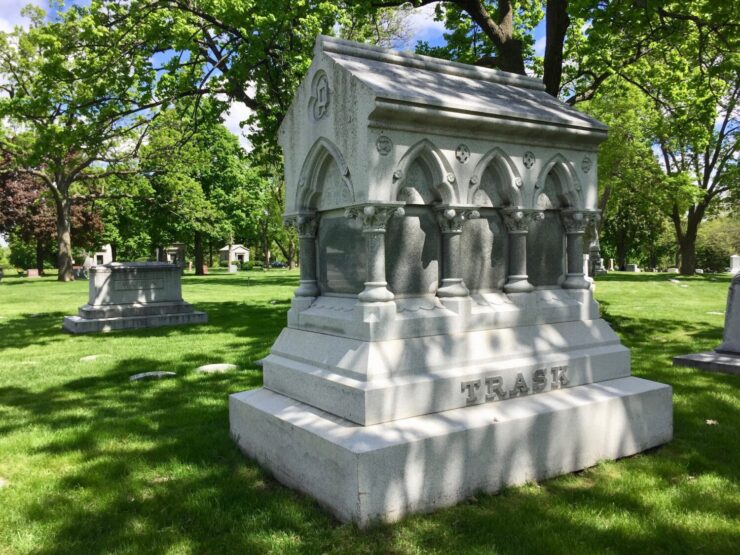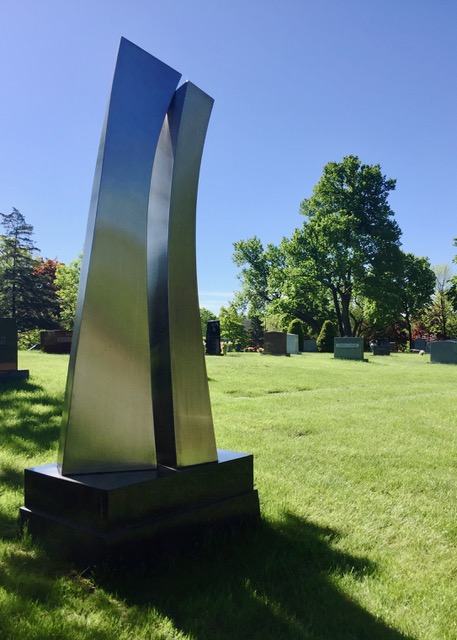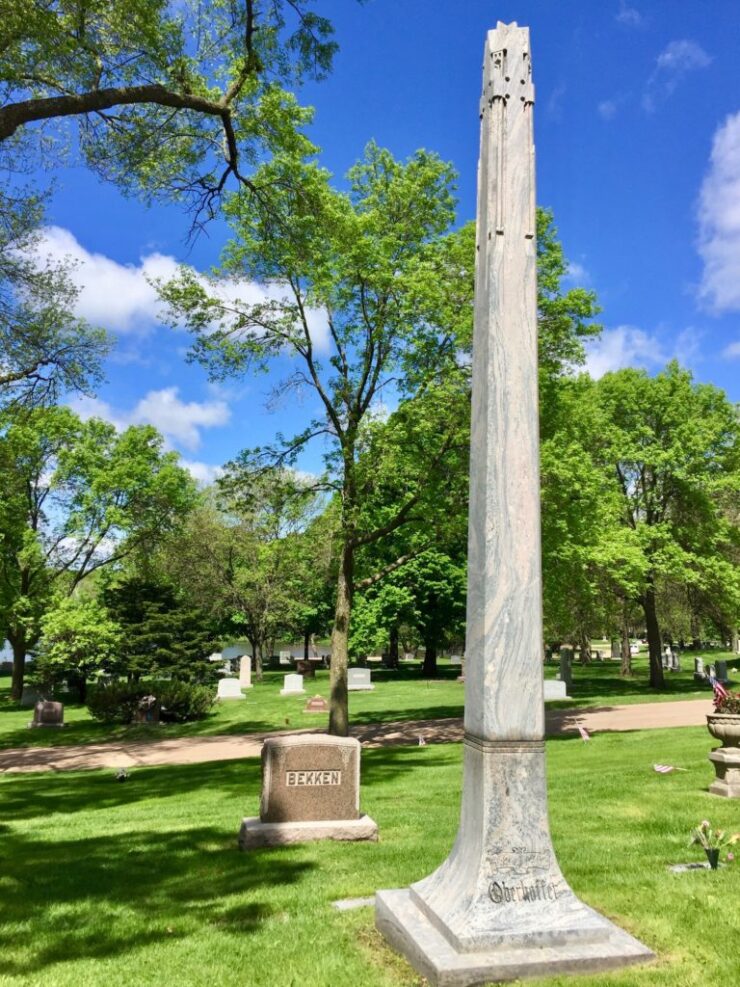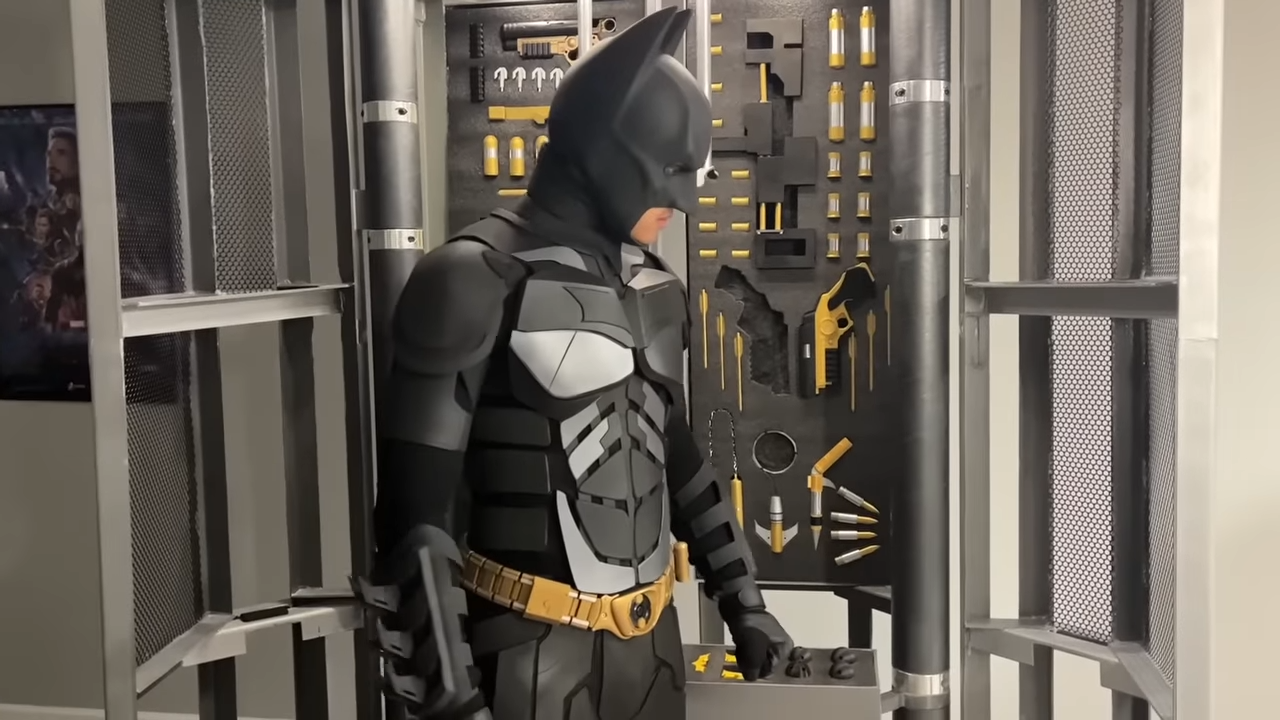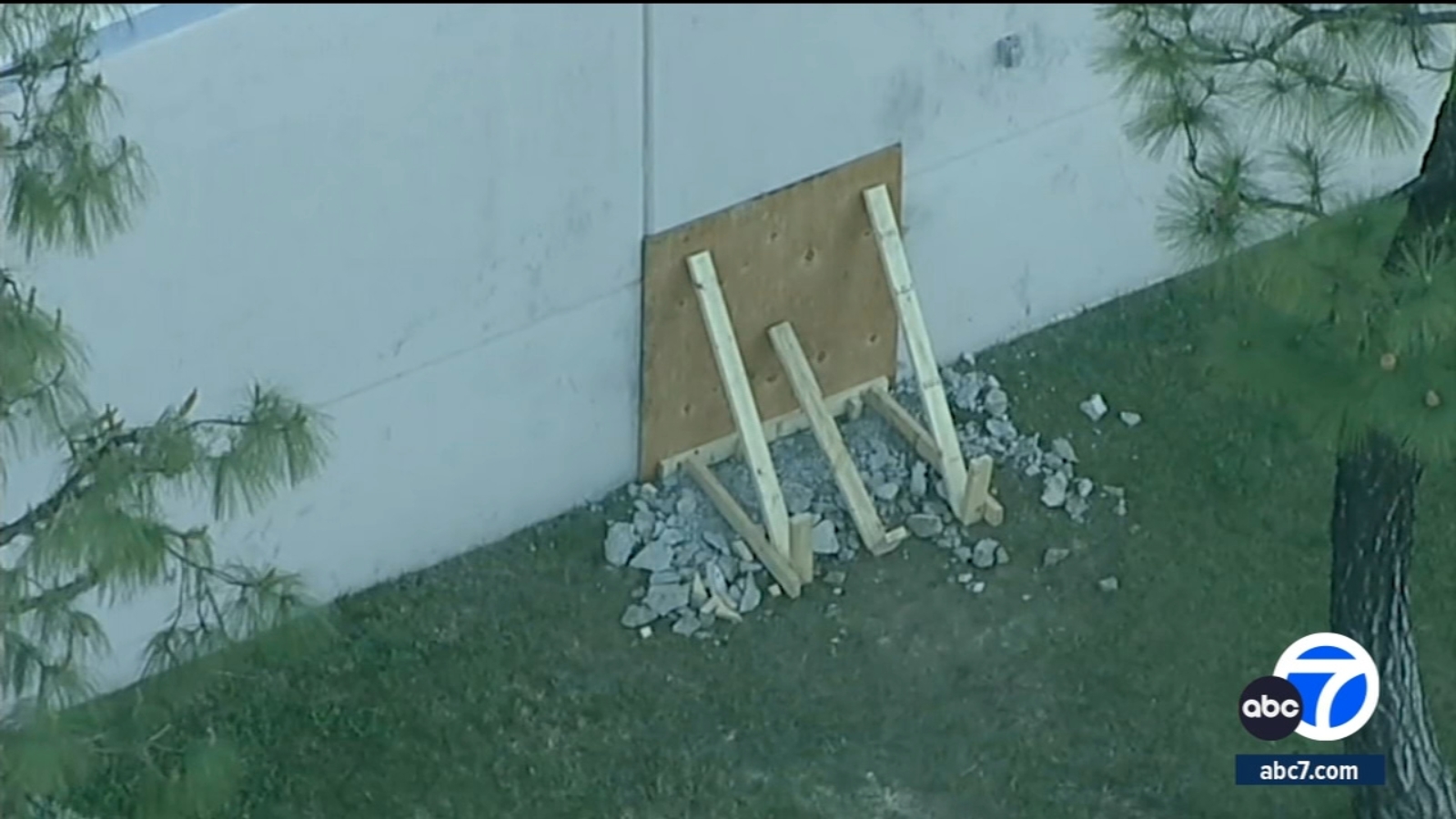“Don’t mourn yet,” Julia Gillis, Lakewood Cemetery’s community engagement and events consultant, said soothingly.
Was I already pouting?
I had come to Lakewood to take a tour with Gillis, who I hoped would show me hidden gems of funerary modernism in the spirit of Lakewood’s two garden-court mausoleums in the northwest quadrant of the grounds.
So why shouldn’t I have anticipated that at least a handful of private family mausoleums, monuments and markers would also be crafted out of stone, sculpted bronze and etched glass in the modern style?
“Hmm,” she said, “There are a few unusual items here that might interest you, but tradition is the norm for many of our more design-heavy monuments —mostly Neoclassical and Egyptian Revival. Let’s start with Rudy Perpich.”
The Perpich monument honors former Minnesota Gov. Rudy Perpich and his wife, Lola. Photos by Wynne Yelland
About halfway down the east side of Lakewood, the Perpich monument (to the Minnesota governor and his wife, Lola) shimmered in the overhead sun. Gloria Tew, a Twin Cities-based sculptor and friend of late modernist architect Ralph Rapson, sculpted the modern monument: two gleaming shapes that bend to a glancing, stainless kiss 15 feet above the manicured lawn.
Tew also designed another abstract stainless memorial here, a curiously unnamed monument overlooking Bde Maka Ska, a few steps from Paul Wellstone’s boulder monument. After seeing both Tew pieces, there wasn’t much else we found in the modern/abstract funerary category at Lakewood.
Gillis and I drove through the mausoleum sections, where families have erected small buildings for interred remains, including the Mars family (of candy fame; mausoleum and contents moved to Lakewood from rural Tennessee), the Lowry family (unusual for its time, designed for cremated remains) and the Wood family (Egyptian Revival in a quirky pyramid motif). While all tastefully designed, nothing floored me like the exquisite Louis Sullivan mausoleums in St. Louis and Chicago.
I returned over Memorial Day weekend with my wife, Linda, and we unearthed a few gems. A short walk from Perpich’s monument is a post-modern monument for the state historical architect Charles W. Nelson. The quartered red granite column, with its bronze intersecting cube form, is no doubt symbolic of something — the Knights Templar are referenced on the monument — though its meaning was inscrutable to us. But after visiting some other monuments, we could appreciate how beautifully different it was from the sarcophagus, square and stele designs prevalent on the grounds.
On our circuitous stroll, we saw hundreds of Egyptian obelisks. In the heyday of large family monuments, the late 19th and early 20th century, Egyptian tomb archaeology fueled public interest in pyramids and other Egyptian iconography. This interest is definitely reflected in Lakewood’s monuments
The Oberhoffer obelisk is less angular and more obviously slender than the Washington Monument and the many obelisks that resemble it.
Most of the obelisks here follow the recognizable proportions of the Washington Monument in D.C., but the singular Oberhoffer obelisk follows a different tune. Oberhoffer’s monument is less angular, more obviously slender and delicately detailed at the top and bottom.
Perhaps Emil Johann Oberhoffer, a violinist and the conductor of the first Minneapolis Symphony Orchestra, leaned towards Egypt but wanted a more lyrical version of the obelisk form. If you know your classical oeuvre, you’ll instantly identify the opening bars of the third movement of Brahms’ first symphony at the obelisk base.
Two of my favorite monuments are architectural miniatures. Larger than most monuments, these two paid tribute to architectural shapes, but they are not big enough to occupy an interior space like their mausoleum cousins.
Loosely following gothic forms, the Dudley-Trask monument reminded me of a rural French church. With a mature tree canopy overhead, it was almost Impressionist (if you squinted a bit).
Find out about the Minneapolis election results and be one of the first ones to know, with accurate information about everything that interestes you.
If you visit no other monument at Lakewood, find the Wyman-Partridge monument in Section 27. The classical proportions have been manipulated in an unusual manner, and the relief work and detailing are worthy of sketching. If you are a fan of those miniature die-cast historical buildings, you will adore this.
For a leisurely afternoon stroll on a sunny day, Lakewood is a quiet, history-studded respite from the more crowded paths around the Chain of Lakes.

